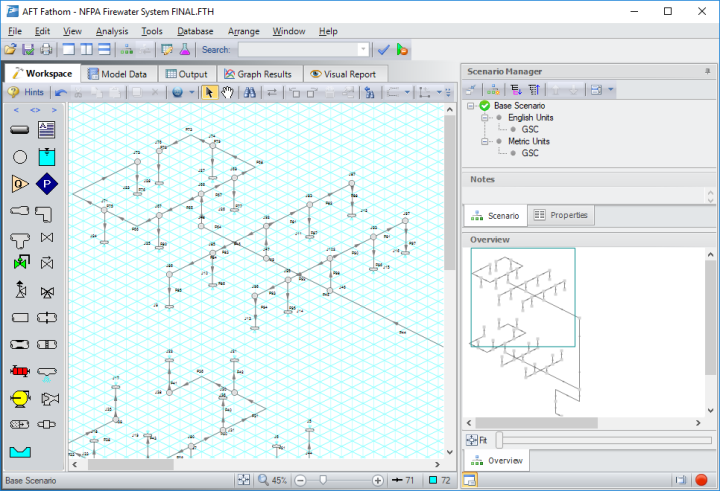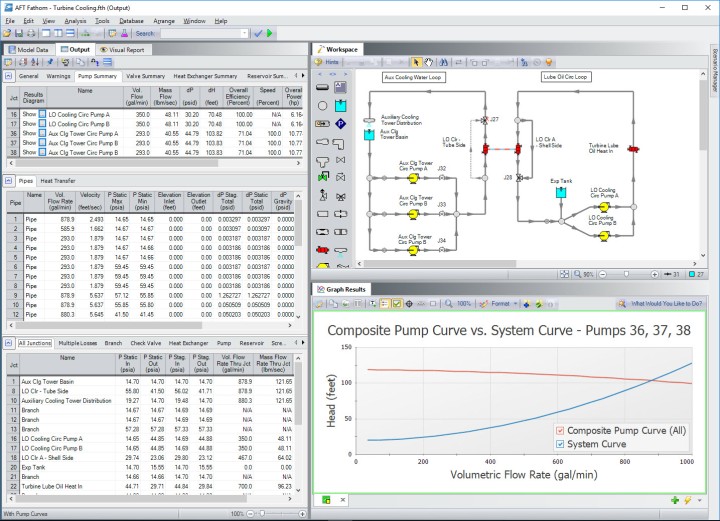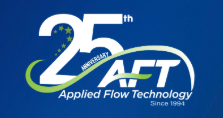AFT Fathom™ is considered by many as the world’s leading pipe flow modeling software tool and Applied Flow Technology (AFT) is celebrating the product’s 25th Anniversary.
The story behind the Fathom name is intimately tied to the story behind the founding of Applied Flow Technology as a company in 1993. AFT Fathom started as a hobby while AFT President and Founder, Trey Walters, P.E., was working in the power industry as a research engineer. As a hobby Trey began developing a software product that did both steady-state and waterhammer calculations. He coined a name Fundamental Analysis of Transient Hydraulics using Object-oriented Modeling (FATHOM).
AFT as company was born in September 1993. But the “FATHOM” software was only half finished and Trey had no software to sell. He made a decision to have Fathom focus on steady-state pipe flow modeling and not perform waterhammer modeling. In doing so, it made his product name obsolete as “Transient Hydraulics” is a term to describe waterhammer. Fathom would focus on just steady-state modeling – so he could have a product to sell. He dropped the meaning of the acronym and the software just became “Fathom”.

A trademark attorney would later advise him to use the name AFT Fathom and it was commercially released on April 12, 1994. The first license was sold in May.
The development plan for AFT Fathom has always been simple: to develop a product made by engineers for engineers to help them easily understand their piping system and predict how pipes, valves, pumps and other components interact with each other. Since the first license was sold in 1994, the tool has been used by tens of thousands of engineers to accurately select and size components to produce safer, less costly and more reliable piping systems.
Trey’s goal was to give engineers a dependable tool that could replace spreadsheets and would give reliable calculations in minutes versus hours or even days.
In 1993-1994, Microsoft Windows (version 3.1) was emerging as the future of desktop operating systems. And graphical user interfaces were emerging as the future of commercial software. It was still mostly a DOS world at that time for most engineers. There were no graphical “drag-and-drop” software products for pipe flow modeling in Windows, and AFT Fathom was the world’s first such commercial product.
In 1996 a DuPont® engineer was looking to replace a home-grown and maintained x-y-z coordinate software that didn’t allow his company to really see what was going on in their systems. Prior to software such as AFT, it was common for companies to write their own programs because they had no other options. His company wanted to replace it with something commercial. After trying the software packages that were available at the time, it really came down to just a couple. AFT’s willingness to do some things specifically for them is why they ultimately chose to use AFT.
For the DuPont engineer, the first version that came out in 1996 was enough to say “wow this is fantastic” just because It was so easy to learn. However, in the DuPont engineer’s opinion, the biggest evolution by far to ever happen in the software was the Scenario Manager. The engineer says, “That was the neatest thing to happen because we could save all these different conditions.” Another tremendous capability was when he was able to model non-Newtonian fluids, which they get into quite often, “To have that capability in the software has really helped us save and helped us work out multi-million-dollar issues.”
Since 1994, the drag-and-drop interface and the original steady-state solution algorithm is largely still used today. In 2012, AFT Fathom 8 was release with a combined common code structure and migrated to the “.NET” framework. A 3rd party tool to handle the drag-and-drop interface was implemented, and Trey’s original drag-and-drop code from 1993 was retired after almost 20 years of use.
In 2018 the interface was enhanced yet again with the release of AFT Fathom 10. This gives engineers the ability to integrate more than ever with Excel®, GIS Shapefiles, CAESAR II®, EPANET, ROHR2™, AutoCAD® Plant 3D, SmartPlant®, PDS™ and CADWorx® as well as utilize 2D or isometric pipe model viewing. The new features added a level of ability to not only efficiently model and analyze a system, but to present it to others in an isometric and more 3D-like fashion.

Throughout the past 25 years, AFT Fathom has been used by leading international companies and engineers. From theme parks to aerospace, and refineries to power generation, AFT Fathom has been used around the world to identify solutions and create proactive designs within the world’s most advanced piping and ducting systems.
Where the software tool goes will depend on industry trends. As long as fluids are transported through piping systems, AFT Fathom will be there to model and analyze the flow.




